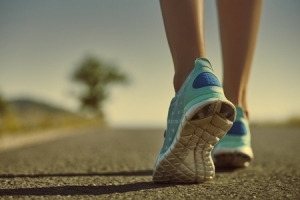Connect With Us
Blogs
Displaying items by tag: orthotic
Fall Sports Do’s and Don’ts
At Superior Foot & Ankle Care Center, we find that patients may not accurately understand the seriousness of decreased circulation to the lower extremities. The medical condition known as peripheral arterial disease (PAD) describes a situation where plaque (fatty deposits or cholesterol) have adhered to the walls of the arteries that lead to your legs and feet causing a partial or total blockage. This restricts the blood flow to the lower half of your body. PAD is often associated with diabetes and a significant cause of some of the more serious complications of the disease. When oxygen and nutrient-rich blood cannot get to your legs and feet in significant quantities, it makes it difficult to heal wounds and ulcers. This can lead to infection and, in extreme cases, amputation.
Recognize the Symptoms
There is a variety of symptoms of PAD that you may observe or experience. These include:
- Pain or cramping in your feet, legs, thighs or buttocks
- Feeling of coldness in your legs
- Hair loss on your toes and legs
- Bluish or reddish tinge to the skin on your feet or under the toenails
- Thickening and discoloration of your toenails
- Ulcers or wounds on your feet that have not healed after 8-12 weeks
If you notice any of these signs, you should contact our Long Beach office for an appointment by calling: (562) 420-9800. Our podiatrists, Dr. Victoria M. Foley or Dr. Constance Ornelas will want to examine your feet. There are a number of simple, non-invasive tests the foot doctor can perform to see if your symptoms point to PAD.
Reducing Your Risk
In addition to diabetes, PAD is also more common in patients who have high blood pressure, high cholesterol, heart disease or who have suffered a stroke. You are also at a higher risk for developing PAD if you are over the age of 50 or have a family history of PAD, heart disease or stroke. The good news, however, is that some risk factors for PAD are within your control to control. These include:
- Smoking
- Sedentary lifestyle
- Obesity
Making healthy lifestyle choices now and partnering with your podiatrist to monitor your foot health can help you prevent PAD or slow its progression. If you have additional questions about PAD, contact us at our Long Beach office in Douglas Park CA.
Walk Your Way to Better Heart and Foot Health
February is American Heart Month and we at Superior Foot & Ankle Care Center want to encourage an activity that will benefit your heart as well as your feet: walking. According to the American Heart Association, brisk walking can lower your risk of diabetes, high blood pressure, and high cholesterol—three factors that greatly increase your risk of heart disease. All of these types of disorders can negatively impact your circulation. With your feet being the part of your body farthest from your heart, circulatory issues are particularly important to good podiatric health. In addition, walking helps you maintain a healthy weight—another plus for protecting your heart and your feet. So, what are you waiting for? Below are a few tips to help you get started.
- Start with good shoes. Walking is appealing because it doesn’t require a lot of expensive equipment and you can do it practically anywhere. The one thing you do need, however, is a good pair of shoes. It’s best to get your feet professionally measured at a shoe store that specializes in athletic footwear. If you have an existing foot disorder such as bunions or plantar fasciitis, talk to one of our podiatrists, Dr. Victoria Foley or Dr. Constance Omelas to learn about designs that will best accommodate your condition. The foot doctor may prescribe an orthotic device to improve comfort and function of your feet.
- Pace yourself. While 30 minutes a day is the goal, every step puts you on the path to better health. If you’ve been sedentary for a while it’s a good idea to start small and gradually increase the speed and length of your walks. Can’t find 30 consecutive minutes? Take two 15-minute walks. Look for ways to sneak in extra steps: walk while you talk on the phone, park farther away from the office or stores, take the stairs instead of the elevator or escalator.
- Make it enjoyable. Walk and talk with a friend, watch your favorite television series while on the treadmill or make walking a bonding opportunity with your teenager. You are much more likely to stick with an activity if you like it.
Within a short time, your walking program will begin to pay off. Not only will your heart and feet be healthier, you’ll sleep better and be more focused during the workday. If you have additional questions about walking and your feet, contact our Long Beach office by calling: 562-420-9800.


